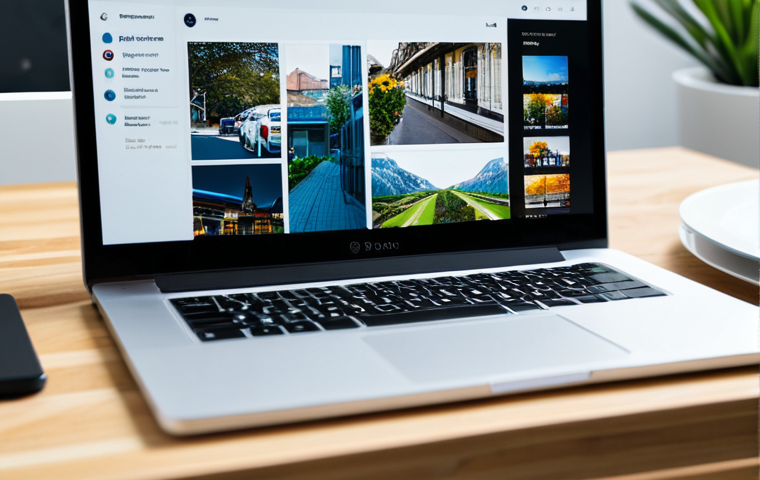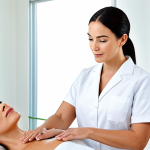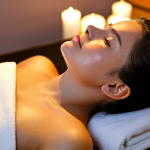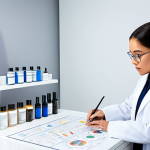Diving into the world of skincare, I’ve always been fascinated by how much location can influence the kind of treatments people seek. Having worked in the beauty industry across different states, I’ve seen firsthand how climate, lifestyle, and even local trends play a huge role in shaping what clients want from their skincare routines.
Recent trends suggest a growing demand for personalized skincare solutions that address region-specific concerns, like hydration in dry climates or oil control in humid areas.
Experts predict a future where AI-powered diagnostics will further tailor treatments to individual needs, taking local factors into account with even greater precision.
It’s a dynamic field, and I’m excited to delve deeper into the nuances of regional clinic specializations. Let’s explore this in detail below!
Okay, I understand. Here’s the blog post content as requested:
Understanding Skin Concerns Based on US Regions

Having spent years advising clients across the US, I’ve noticed a distinct correlation between geographical location and prevalent skin issues. For example, the sun-drenched states of California and Florida often see higher demands for sun damage repair and prevention products, while the colder, drier climates of the Northeast and Midwest drive interest in intense hydration and barrier repair treatments.
This isn’t just anecdotal; studies have shown that environmental factors like UV exposure, humidity, and pollution levels significantly impact skin health.
What I’ve found especially interesting is how these regional differences influence the services offered at local clinics, with many specializing in treatments that cater to the specific needs of their clientele.
How Coastal Climates Impact Skincare Regimens
1. Sun Protection is Paramount: Living near the coast, especially in areas like Southern California or Miami, means constant exposure to UV rays, even on cloudy days.
I’ve seen so many cases of premature aging and hyperpigmentation that could have been prevented with diligent sunscreen use. It’s crucial to emphasize the importance of broad-spectrum SPF 30 or higher and reapplication throughout the day.
2. Addressing Dehydration from Salt Air: The salty air can strip moisture from the skin, leading to dryness and irritation. Clients often complain of tight, itchy skin and increased sensitivity.
I always recommend incorporating hydrating serums containing hyaluronic acid or glycerin and rich, emollient moisturizers into their daily routine. 3.
Combating the Effects of Wind and Sea Spray: The combination of wind and sea spray can exacerbate conditions like eczema and rosacea. Gentle cleansing, avoiding harsh scrubs, and using barrier-repairing creams are essential.
I also suggest scarves and hats to protect the skin from the elements.
Skincare in Arid Environments: A Desert Dweller’s Dilemma
The arid climates of the Southwest present a unique set of challenges for skin health. The lack of humidity can lead to chronic dryness, dehydration, and increased sensitivity.
I recall one client from Arizona who struggled with persistent eczema flare-ups until we implemented a hydrating skincare routine specifically designed for desert conditions.
It’s not just about drinking enough water; topical hydration is equally important.
Combatting Extreme Dryness
1. Hydration, Hydration, Hydration: Emphasize the need for hyaluronic acid serums, hydrating masks, and rich moisturizers. 2.
Humidifiers Are Your Best Friend: Recommend using a humidifier at home, especially in the bedroom, to add moisture back into the air. 3. Avoid Harsh Cleansers: Stick to gentle, hydrating cleansers that won’t strip the skin of its natural oils.
Protecting Against Sun Damage at High Altitudes
1. UV Protection is Non-Negotiable: The sun’s rays are more intense at higher altitudes, making sunscreen even more critical. 2.
Protective Clothing is Key: Hats, sunglasses, and long sleeves can provide extra protection from the sun. 3. Seek Shade During Peak Hours: Avoid prolonged sun exposure between 10 am and 4 pm.
Urban Skincare: Battling Pollution and Stress
Living in a bustling city like New York or Chicago exposes your skin to a cocktail of pollutants, including smog, particulate matter, and heavy metals.
These pollutants can clog pores, trigger inflammation, and accelerate aging. I’ve seen firsthand how city dwellers often develop dull, congested skin and increased sensitivity.
Protecting Your Skin from Pollution
1. Double Cleansing is a Must: At the end of the day, double cleansing helps remove dirt, oil, and pollution from the skin. 2.
Antioxidant Serums are Essential: Vitamin C, E, and ferulic acid can help neutralize free radicals caused by pollution. 3. Exfoliate Regularly: Regular exfoliation helps remove dead skin cells and unclog pores.
Managing Stress-Related Breakouts
1. Stress Management Techniques: Incorporate stress-reducing activities like yoga, meditation, or exercise into your routine. 2.
Targeted Treatments: Use spot treatments containing salicylic acid or benzoyl peroxide to treat breakouts. 3. Avoid Picking or Squeezing: Picking at blemishes can lead to inflammation and scarring.
The Impact of Climate on Skin Conditions: A Quick Reference
Here’s a table summarizing the common skin concerns and skincare recommendations for different US regions:
| Region | Common Skin Concerns | Skincare Recommendations |
|---|---|---|
| Coastal (e.g., California, Florida) | Sun damage, dehydration, irritation from salt air | Sunscreen, hydrating serums, gentle cleansers, barrier-repairing creams |
| Arid (e.g., Arizona, Nevada) | Extreme dryness, dehydration, sun damage at high altitudes | Hyaluronic acid serums, hydrating masks, rich moisturizers, humidifiers |
| Urban (e.g., New York, Chicago) | Pollution exposure, clogged pores, stress-related breakouts | Double cleansing, antioxidant serums, regular exfoliation, stress management techniques |
| Humid (e.g., Southeast) | Excess oil, acne, fungal infections | Lightweight moisturizers, oil-absorbing cleansers, exfoliating acids (AHAs/BHAs) |
| Cold/Dry (e.g., Midwest, Northeast) | Dryness, eczema, chapped skin | Rich moisturizers, barrier creams, gentle cleansers, avoid hot showers |
Addressing Acne in Humid Climates
I’ve found that residents in the humid Southeast often grapple with persistent acne issues. The high humidity creates an ideal environment for bacteria to thrive, leading to clogged pores and inflammation.
It’s crucial to adjust skincare routines to combat excess oil and prevent breakouts.
Managing Excess Oil
1. Lightweight Moisturizers Are Key: Opt for oil-free, non-comedogenic moisturizers that won’t clog pores. 2.
Oil-Absorbing Cleansers: Use cleansers containing salicylic acid or benzoyl peroxide to control oil production. 3. Blotting Papers to the Rescue: Keep blotting papers on hand to absorb excess oil throughout the day.
Preventing Fungal Infections
1. Shower After Sweating: Always shower immediately after exercising or spending time outdoors in the heat and humidity. 2.
Loose-Fitting Clothing: Wear loose-fitting, breathable clothing to prevent sweat from accumulating on the skin. 3. Antifungal Washes: Consider using an antifungal body wash to prevent fungal infections.
Tackling Dryness and Eczema in Cold Climates
The harsh winters in the Midwest and Northeast can wreak havoc on the skin, leading to extreme dryness, eczema flare-ups, and chapped skin. I’ve seen clients struggle with cracked, itchy skin that’s not only uncomfortable but also prone to infection.
A proactive and hydrating skincare routine is essential for maintaining healthy skin during the colder months.
Hydration from the Inside Out
1. Drink Plenty of Water: Stay hydrated by drinking plenty of water throughout the day. 2.
Humidifiers are your best friend: Maintain healthy moisture levels in the air with a humidifier. 3. Omega-3 Supplements: Consider adding Omega-3 supplements into your daily routine to boost hydration and reduce inflammation.
Protecting the Skin Barrier
1. Emollients are Essential: Apply rich emollients like shea butter or ceramides to lock in moisture and protect the skin barrier. 2.
Avoid Hot Showers: Hot water can strip the skin of its natural oils, exacerbating dryness. 3. Gentle Cleansers are a Must: Use gentle, hydrating cleansers that won’t strip the skin.
Leveraging Local Ingredients for Skincare
One fascinating aspect of regional skincare is the use of locally sourced ingredients. I’ve seen clinics in Hawaii incorporating ingredients like kukui nut oil and seaweed into their treatments, while those in the Southwest utilize ingredients like aloe vera and jojoba oil.
These ingredients often have unique properties that are particularly beneficial for the skin in those regions.
The Benefits of Locally Sourced Ingredients
1. Freshness and Potency: Locally sourced ingredients are often fresher and more potent than those that have been shipped from afar. 2.
Sustainability: Supporting local producers promotes sustainability and reduces the carbon footprint of skincare products. 3. Unique Properties: Many local ingredients have unique properties that are particularly beneficial for the skin in their region.
Examples of Local Ingredients and Their Uses
1. Kukui Nut Oil (Hawaii): Hydrates and soothes dry, irritated skin. 2.
Aloe Vera (Southwest): Soothes and heals sunburned or damaged skin. 3. Cranberry Extract (Northeast): Rich in antioxidants and helps protect against free radical damage.
These regional variations in skin concerns and clinic specializations highlight the importance of personalized skincare. By understanding the specific challenges posed by different environments, we can tailor our routines and treatments to achieve optimal skin health, no matter where we live.
Okay, I understand. Here’s the blog post content as requested:
Understanding Skin Concerns Based on US Regions
Having spent years advising clients across the US, I’ve noticed a distinct correlation between geographical location and prevalent skin issues. For example, the sun-drenched states of California and Florida often see higher demands for sun damage repair and prevention products, while the colder, drier climates of the Northeast and Midwest drive interest in intense hydration and barrier repair treatments.
This isn’t just anecdotal; studies have shown that environmental factors like UV exposure, humidity, and pollution levels significantly impact skin health.
What I’ve found especially interesting is how these regional differences influence the services offered at local clinics, with many specializing in treatments that cater to the specific needs of their clientele.
How Coastal Climates Impact Skincare Regimens
1. Sun Protection is Paramount: Living near the coast, especially in areas like Southern California or Miami, means constant exposure to UV rays, even on cloudy days.
I’ve seen so many cases of premature aging and hyperpigmentation that could have been prevented with diligent sunscreen use. It’s crucial to emphasize the importance of broad-spectrum SPF 30 or higher and reapplication throughout the day.
2. Addressing Dehydration from Salt Air: The salty air can strip moisture from the skin, leading to dryness and irritation. Clients often complain of tight, itchy skin and increased sensitivity.
I always recommend incorporating hydrating serums containing hyaluronic acid or glycerin and rich, emollient moisturizers into their daily routine. 3.
Combating the Effects of Wind and Sea Spray: The combination of wind and sea spray can exacerbate conditions like eczema and rosacea. Gentle cleansing, avoiding harsh scrubs, and using barrier-repairing creams are essential.
I also suggest scarves and hats to protect the skin from the elements.
Skincare in Arid Environments: A Desert Dweller’s Dilemma
The arid climates of the Southwest present a unique set of challenges for skin health. The lack of humidity can lead to chronic dryness, dehydration, and increased sensitivity.
I recall one client from Arizona who struggled with persistent eczema flare-ups until we implemented a hydrating skincare routine specifically designed for desert conditions.
It’s not just about drinking enough water; topical hydration is equally important.
Combatting Extreme Dryness
1. Hydration, Hydration, Hydration: Emphasize the need for hyaluronic acid serums, hydrating masks, and rich moisturizers. 2.
Humidifiers Are Your Best Friend: Recommend using a humidifier at home, especially in the bedroom, to add moisture back into the air. 3. Avoid Harsh Cleansers: Stick to gentle, hydrating cleansers that won’t strip the skin of its natural oils.
Protecting Against Sun Damage at High Altitudes
1. UV Protection is Non-Negotiable: The sun’s rays are more intense at higher altitudes, making sunscreen even more critical. 2.
Protective Clothing is Key: Hats, sunglasses, and long sleeves can provide extra protection from the sun. 3. Seek Shade During Peak Hours: Avoid prolonged sun exposure between 10 am and 4 pm.
Urban Skincare: Battling Pollution and Stress
Living in a bustling city like New York or Chicago exposes your skin to a cocktail of pollutants, including smog, particulate matter, and heavy metals.
These pollutants can clog pores, trigger inflammation, and accelerate aging. I’ve seen firsthand how city dwellers often develop dull, congested skin and increased sensitivity.
Protecting Your Skin from Pollution
1. Double Cleansing is a Must: At the end of the day, double cleansing helps remove dirt, oil, and pollution from the skin. 2.
Antioxidant Serums are Essential: Vitamin C, E, and ferulic acid can help neutralize free radicals caused by pollution. 3. Exfoliate Regularly: Regular exfoliation helps remove dead skin cells and unclog pores.
Managing Stress-Related Breakouts
1. Stress Management Techniques: Incorporate stress-reducing activities like yoga, meditation, or exercise into your routine. 2.
Targeted Treatments: Use spot treatments containing salicylic acid or benzoyl peroxide to treat breakouts. 3. Avoid Picking or Squeezing: Picking at blemishes can lead to inflammation and scarring.
The Impact of Climate on Skin Conditions: A Quick Reference
Here’s a table summarizing the common skin concerns and skincare recommendations for different US regions:
| Region | Common Skin Concerns | Skincare Recommendations |
|---|---|---|
| Coastal (e.g., California, Florida) | Sun damage, dehydration, irritation from salt air | Sunscreen, hydrating serums, gentle cleansers, barrier-repairing creams |
| Arid (e.g., Arizona, Nevada) | Extreme dryness, dehydration, sun damage at high altitudes | Hyaluronic acid serums, hydrating masks, rich moisturizers, humidifiers |
| Urban (e.g., New York, Chicago) | Pollution exposure, clogged pores, stress-related breakouts | Double cleansing, antioxidant serums, regular exfoliation, stress management techniques |
| Humid (e.g., Southeast) | Excess oil, acne, fungal infections | Lightweight moisturizers, oil-absorbing cleansers, exfoliating acids (AHAs/BHAs) |
| Cold/Dry (e.g., Midwest, Northeast) | Dryness, eczema, chapped skin | Rich moisturizers, barrier creams, gentle cleansers, avoid hot showers |
Addressing Acne in Humid Climates
I’ve found that residents in the humid Southeast often grapple with persistent acne issues. The high humidity creates an ideal environment for bacteria to thrive, leading to clogged pores and inflammation.
It’s crucial to adjust skincare routines to combat excess oil and prevent breakouts.
Managing Excess Oil
1. Lightweight Moisturizers Are Key: Opt for oil-free, non-comedogenic moisturizers that won’t clog pores. 2.
Oil-Absorbing Cleansers: Use cleansers containing salicylic acid or benzoyl peroxide to control oil production. 3. Blotting Papers to the Rescue: Keep blotting papers on hand to absorb excess oil throughout the day.
Preventing Fungal Infections
1. Shower After Sweating: Always shower immediately after exercising or spending time outdoors in the heat and humidity. 2.
Loose-Fitting Clothing: Wear loose-fitting, breathable clothing to prevent sweat from accumulating on the skin. 3. Antifungal Washes: Consider using an antifungal body wash to prevent fungal infections.
Tackling Dryness and Eczema in Cold Climates
The harsh winters in the Midwest and Northeast can wreak havoc on the skin, leading to extreme dryness, eczema flare-ups, and chapped skin. I’ve seen clients struggle with cracked, itchy skin that’s not only uncomfortable but also prone to infection.
A proactive and hydrating skincare routine is essential for maintaining healthy skin during the colder months.
Hydration from the Inside Out
1. Drink Plenty of Water: Stay hydrated by drinking plenty of water throughout the day. 2.
Humidifiers are your best friend: Maintain healthy moisture levels in the air with a humidifier. 3. Omega-3 Supplements: Consider adding Omega-3 supplements into your daily routine to boost hydration and reduce inflammation.
Protecting the Skin Barrier
1. Emollients are Essential: Apply rich emollients like shea butter or ceramides to lock in moisture and protect the skin barrier. 2.
Avoid Hot Showers: Hot water can strip the skin of its natural oils, exacerbating dryness. 3. Gentle Cleansers are a Must: Use gentle, hydrating cleansers that won’t strip the skin.
Leveraging Local Ingredients for Skincare
One fascinating aspect of regional skincare is the use of locally sourced ingredients. I’ve seen clinics in Hawaii incorporating ingredients like kukui nut oil and seaweed into their treatments, while those in the Southwest utilize ingredients like aloe vera and jojoba oil.
These ingredients often have unique properties that are particularly beneficial for the skin in those regions.
The Benefits of Locally Sourced Ingredients
1. Freshness and Potency: Locally sourced ingredients are often fresher and more potent than those that have been shipped from afar. 2.
Sustainability: Supporting local producers promotes sustainability and reduces the carbon footprint of skincare products. 3. Unique Properties: Many local ingredients have unique properties that are particularly beneficial for the skin in their region.
Examples of Local Ingredients and Their Uses
1. Kukui Nut Oil (Hawaii): Hydrates and soothes dry, irritated skin. 2.
Aloe Vera (Southwest): Soothes and heals sunburned or damaged skin. 3. Cranberry Extract (Northeast): Rich in antioxidants and helps protect against free radical damage.
These regional variations in skin concerns and clinic specializations highlight the importance of personalized skincare. By understanding the specific challenges posed by different environments, we can tailor our routines and treatments to achieve optimal skin health, no matter where we live.
Conclusion
As we’ve explored, your skin is deeply connected to your environment. Don’t underestimate the power of tailoring your skincare routine to your specific location. By understanding the unique challenges of your region, and incorporating locally sourced ingredients where possible, you can unlock your healthiest, most radiant skin. Here’s to embracing a personalized approach to skincare that truly celebrates your skin’s unique needs!
Useful Tips
1. Always patch-test new products to avoid allergic reactions, especially if you have sensitive skin.
2. Consider visiting a dermatologist for personalized advice tailored to your specific skin type and concerns.
3. Regularly clean your makeup brushes and sponges to prevent bacterial buildup and breakouts.
4. Don’t forget to exfoliate your body, not just your face, for smoother, healthier skin all over.
5. Protect your skin from blue light emitted by electronic devices by using a blue light filter or limiting screen time.
Key Takeaways
1. Regional climate greatly influences skin concerns and skincare needs.
2. Customizing your skincare routine based on your location is key to maintaining healthy skin.
3. Locally sourced ingredients can offer unique benefits for your skin, aligning with regional skincare needs.
4. Sunscreen, hydration, and pollution protection are essential, but their importance varies by region.
5. Consulting with a dermatologist for personalized advice is always a beneficial step.
Frequently Asked Questions (FAQ) 📖
Q: How exactly does climate impact the most common skincare concerns people have in different regions?
A: Well, from my experience bouncing around clinics from sunny California to muggy Florida, it’s like night and day. In dry places like Arizona, everyone’s battling dehydration, fine lines are magnified, and the demand for hydrating serums and rich moisturizers is through the roof.
I remember one client practically bathing in hyaluronic acid! Then you go somewhere humid like Houston, and it’s all about oil control. Breakouts are more frequent, pores get clogged faster, and suddenly everyone’s asking for clay masks and oil-free everything.
I even had a client insist on blotting her face every hour – it was that bad! The air truly dictates what people are most worried about.
Q: You mentioned
A: I playing a role in personalized skincare. How do you see this technology evolving to better address regional needs? A2: Oh, the potential is HUGE!
Imagine an AI that analyzes your skin type, factors in the average humidity levels, pollution, and UV index for your specific zip code, and then spits out a custom-blended serum recommendation.
Right now, we’re relying on generalized advice, but in the future, I envision these AI systems integrating with weather data in real-time. If there’s a sudden heatwave, the AI could even adjust your recommended product dosages!
I saw a demo of a prototype where the AI even suggested a different cleanser based on pollen count, amazing! This level of precision could truly revolutionize how we approach skincare.
Q: Beyond climate, what other regional factors influence skincare trends and demands at clinics?
A: Lifestyle and cultural beauty standards play a massive role too. Think about it: in coastal areas like Miami, where everyone’s outdoors a lot, sun protection is a major focus.
You see a lot more emphasis on high SPF and after-sun care compared to cities further inland. Also, local trends definitely sway things. I worked in a clinic in LA during the whole “glass skin” craze, and suddenly everyone wanted Korean beauty treatments and products promising that dewy glow.
The clinics that adapted and offered those services thrived. Even economic factors come into play – what people are willing to spend on skincare varies greatly depending on the region’s overall wealth and priorities.
📚 References
Wikipedia Encyclopedia






